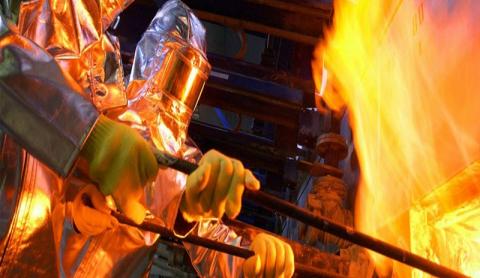As discussions around the housing crisis intensify, governments at every level aresearching for creative and…

How is Glass Made?
The Pilkington Process
Glass is made from melting sand into a liquid. You won’t see that happening at your local beach though. Sand melts into a liquid state at around 1700˚ C (or 30390˚ F)! In a commercial glass plant, sand is mixed with cullet (recycled glass pieces), soda ash and limestone and is then heated. The soda helps reduce the sand’s melting point which helps reduce the overall energy—and cost—needed to melt it. The by-product of adding the soda is that it produces glass that dissolves in water, so limestone is added to stop that from happening. The end product is called soda-lime-silica glass and it’s the most often used glass.
The strange part is that no matter how hard you try to cool sand after it is has been heated to 1700˚ C, it never turns back into a sold again. It becomes what scientists call an amorphous solid, which is like a hybrid solid and liquid.
Depending on what type of glass is being created, the melted sand can be poured into molds to make bottles or poured over the surface of molten tin to make flat sheets of glass used in windows and doors. The float glass process is called the Pilkington Process, named after the British glass manufacturer Pilkington, who pioneered the technique in the 1950s.
Other chemicals can also be added to the original recipe that alters the properties or appearance.

Lead – makes leaded or crystal glasses. The lead has better reflective properties and therefore the glass seems to ‘sparkle’. This kind of glass also lends itself to be cut to form decorative patterns on the glass.
Boron –changes the thermal and electrical properties of the glass and is used to make Pyrex glassware which can withstand extremes of heat and cold.
Lanthanum Oxide –excellent light reflective properties and is used to make high quality lenses in glasses.
Iron – used to absorb infrared energy
Color Additives A range of additives can be used to make glass into different colors.
The cooling process can also be altered to create different forms of glass. Annealed glass, tempered glass and laminated glass are all types of glass that are created using the same basic sand recipe, but additional steps are taken during the manufacturing process to coat, heat treat or engrave the glass.
Innovations in Glass Manufacturing
The glass industry is continually evolving, with recent advancements focusing on sustainability and performance:
- Smart Glass Technologies: Innovations such as switchable smart glass allow for control over transparency and light transmission, enhancing energy efficiency in buildings.
- Ultra-Thin, Strong Glass: Developments in ultra-thin glass, similar to those used in smartphones, are being adapted for architectural applications. These windows offer superior insulation and strength, potentially reducing energy costs significantly.
- Sustainable Practices: The industry is increasingly adopting eco-friendly methods, including recycling glass and reducing carbon emissions during production.
The Future of Glass
As technology advances, glass manufacturing continues to innovate, integrating new materials and processes to meet the demands of modern applications. From energy-efficient building materials to high-performance components in electronics, glass remains at the forefront of material science.
For those in the glass manufacturing sector, staying abreast of these developments is crucial. Companies like Wakefield Equipment support manufacturers with a comprehensive range of glass handling equipment, ensuring efficiency and safety in production processes.
Understanding the intricacies of glass production not only highlights the material’s versatility but also underscores the industry’s commitment to innovation and sustainability.
Learn more about how Wakefield Equipment supports glass manufacturers with a full line of glass handling equipment!



